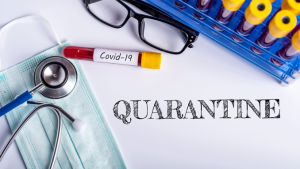 When the Centers for Disease Control (CDC) revised their quarantine and isolation guidance on December 27th (here), it kicked off a wave of revisions nationwide that is now hitting California’s workplaces.
When the Centers for Disease Control (CDC) revised their quarantine and isolation guidance on December 27th (here), it kicked off a wave of revisions nationwide that is now hitting California’s workplaces.
On January 6th and 11th, 2022, the California Department of Public Health (CDPH) revised their quarantine and isolation guidance (here) and California’s Department of Occupational Safety and Health (Cal/OSHA) issued a revised press release and FAQ’s explaining that CDPH’s revised guidance would apply to California workplaces beginning on January 14, 2022.
Previously, such quarantine periods had been set under the state’s COVID-19 workplace regulation (also known as the Emergency Temporary Standard or “ETS”). In fact, as recently as December of 2021, Cal/OSHA’s Standards Board had voted to approve another extension of the ETS with specific requirements as to how long exposed workers needed to be excluded from the workplace.
However, this new CDPH guidance will replace the portions of the ETS which deal with excluding workers from the workplace. As Cal/OSHA’s FAQ’s put it: “… the new isolation and quarantine recommendations from CDPH replace the exclusion periods and return to work criteria in Sections 3205(c)(9) and 3205(c)(10) of the ETS.”
So what do these new requirements mean for California’s workplaces?
After January 14, 2022, the ETS text which Cal/OSHA approved at their meeting in December of 2021 (here) goes into effect, except that the ETS’s provisions regarding how long to exclude workers who test positive for, or were exposed to, COVID-19 (Subsections 3205(c)(9)&(10)) are replaced by the CDPH exclusion guidelines, as described in Cal/OSHA’s FAQs.
These changes mean that employers who had prepared their workplace policies with the December ETS amendments in mind will need to revise their policies. The good news is that the quarantine periods prescribed by CDPH are shorter than the version of the ETS that was passed by Cal/OSHA in December of 2021. However, the CDPH guidance will require considerably more testing for most workplaces – which may be difficult for many employers to procure during a testing shortage – and more masking.
Generally, the CDPH guidelines require:
- Positive COVID-19 cases who show no symptoms must be excluded from the workplace for at least 5 days but can return earlier if they test negative on day 5. If symptoms persist, isolation must continue until they are resolved.
- Unvaccinated employees who have a close contact must be excluded for 10 days, unless they have no symptoms and take a test on day 5 which comes back negative.
- 2-shot vaccinated employees who are due for a booster and show no symptoms can continue to work but must be tested in the range of day 3-5 after a close contact. Notably, this is similar to the January 14th ETS text, which allows 2-shot employees to return to work after exposure.
- Fully-boosted employees (or those who are not yet eligible for a booster) who have a close contact can return to work immediately if they have no symptoms, but must still get tested on day 5 after exposure.
Outstanding Questions for California Employers:
As usual with rapidly changing guidance, this new guidance and these FAQ’s have left employers with a few unresolved questions. For example:
- The January 14th ETS required that vaccinated workers with no symptoms returning after a negative test needed to be socially distanced for 14 days. In contrast, CDPH guidance does not mention social distancing – so is post-exposure social distancing still required after a negative test? Or is that part of the ETS which was replaced by the new guidance?
- How does an employer “observe” a test if we want the employee to test before coming to work? Does this mean at-home tests that are self-administered and rapid aren’t usable, effectively? Or, for example, can an employer have the employee send a picture with the results?
- What is intended by the new requirement that masks should “not let light pass through when held up to a light source” mean for California’s workplaces?
- And, perhaps most importantly, if an employee refuses to be tested on Day 5, are employers still required to provide exclusion pay after Day 5?
For now, employers must await further FAQ’s from Cal/OSHA – who I believe are working hard on more clarifications. Given how 2021 ended, waiting for more clarification should be a familiar feeling for most of California’s employers.
Here’s hoping that 2022 ends on a clearer note, with far more vaccination, and far less COVID-19.
Staff Contact: Robert Moutrie


